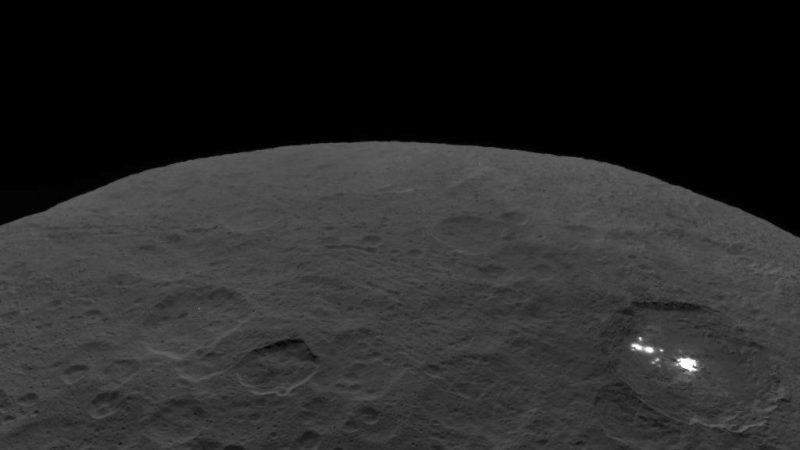
NASA’s Dawn spacecraft has gone silent. The spacecraft missed scheduled communications sessions with NASA’s Deep Space Network on Wednesday (October 31, 2018) and Thursday (November 1). After the flight team eliminated other possible causes for the missed communications, mission managers concluded that the spacecraft had finally run out of hydrazine, the fuel that enables the spacecraft to control its pointing. With its hydrazine depleted, NASA said, Dawn can no longer keep its antennas trained on Earth to communicate with mission control or turn its solar panels to the sun to recharge.
The Dawn spacecraft launched in September 2007. Its mission was visit the two largest objects in the main asteroid belt – Vesta and Ceres. The spacecraft as traveled 4.3 billion miles (6.9 billion km) and is currently in orbit around the dwarf planet Ceres, where it will remain for decades.
Propelled by ion engines, the spacecraft achieved many firsts along the way. In 2011, when Dawn arrived at Vesta, the second largest world in the main asteroid belt, the spacecraft became the first to orbit a body in the region between Mars and Jupiter. In 2015, when Dawn went into orbit around Ceres, a dwarf planet that is also the largest world in the asteroid belt, the mission became the first to visit a dwarf planet and go into orbit around two destinations beyond Earth.
Mission Director and Chief Engineer Marc Rayman at NASA’s Jet Propulsion Laboratory (JPL) said in a statement:
The fact that my car’s license plate frame proclaims, ‘My other vehicle is in the main asteroid belt,’ shows how much pride I take in Dawn. The demands we put on Dawn were tremendous, but it met the challenge every time. It’s hard to say goodbye to this amazing spaceship, but it’s time.
According to a NASA statement:
The data Dawn beamed back to Earth from its four science experiments enabled scientists to compare two planet-like worlds that evolved very differently. Among its accomplishments, Dawn showed how important location was to the way objects in the early solar system formed and evolved. Dawn also reinforced the idea that dwarf planets could have hosted oceans over a significant part of their history – and potentially still do.
The mission plan doesn’t provide the dramatic closure of a final, fiery plunge the way NASA’s Cassini spacecraft ended last year. That’s because Ceres has conditions of interest to scientists who study chemistry that leads to the development of life, so NASA follows strict planetary protection protocols for the disposal of the Dawn spacecraft. Dawn will remain in orbit for at least 20 years, and engineers have more than 99 percent confidence the orbit will last for at least 50 years.
Bottom line: The Dawn spacecraft has run out of fuel. The mission to explore the 2 largest bodies in the asteroid belt, Vesta and Ceres, is at an end.
























